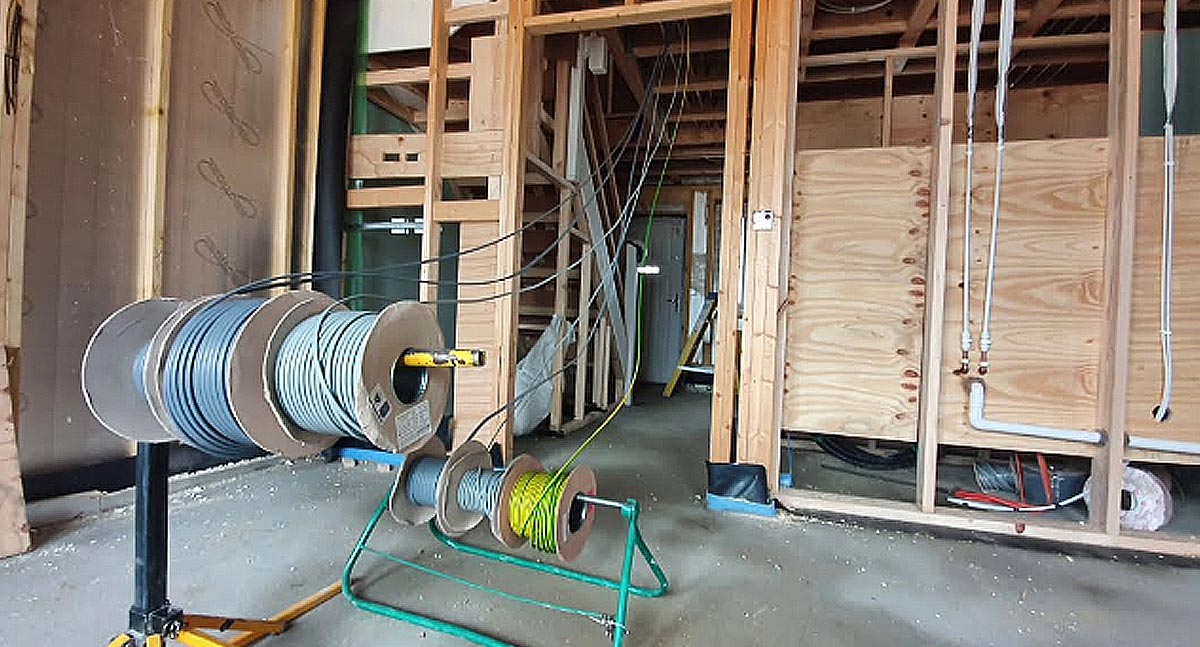The Ultimate Guide to Electric Setup: Tips and Methods for a Safe and Efficient Home Electrical Wiring System
In the world of home upkeep, couple of elements are as essential yet usually ignored as the electrical wiring system. By checking out the nuances of electric safety and security measures and energy-saving techniques, this detailed overview will lose light on the details of home wiring, encouraging individuals to take cost of their household's electrical facilities.
Understanding Electric Safety And Security Procedures
To make certain the security of both people and property, understanding and applying proper electric safety measures is extremely important in any kind of home circuitry job. It is crucial to conduct a thorough assessment of the electrical system prior to starting any kind of electrical wiring task to identify prospective dangers or concerns that require to be attended to.
Additionally, making use of the proper devices and tools is vital for preserving safety throughout electric installments. Insulated gloves, voltage testers, and safety glasses are several of the standard security equipment that must be put on to protect against electric shocks or accidents. It is additionally vital to de-energize circuits before functioning on them and to label all circuits and breakers clearly to avoid confusion.

Necessary Tools for Home Circuitry
Ensuring the correct implementation of electric safety steps in home electrical wiring projects includes utilizing a certain collection of vital devices developed to promote the installation procedure efficiently and safely. Some of the secret devices required for home electrical wiring jobs include a voltage tester for checking live wires, cable pole dancers for removing insulation from wires, a wire cutter for specifically reducing wires to length, a screwdriver set for protecting electrical parts, electrical tape for insulation and safeguarding connections, a wire ripper for removing cable television sheathing, and a multimeter for gauging voltage, existing, and resistance.
Step-by-Step Electric Installment Overview
Starting an electric installation task requires thorough preparation and adherence to security guidelines. Prior to starting any type of work, ensure you have a comprehensive strategy laying out the design of the electric system, consisting of the placement of electrical outlets, switches, and components. Think about the power needs of each device to establish the proper cable gauge and circuit breaker sizes.
The primary step in the setup procedure is to shut off the power supply to the location where you will certainly be working. Utilize a voltage tester to confirm that the circuits are de-energized prior to touching any type of wires. Next off, carefully eliminate existing components or outlets and detach the cords.
When setting up new wiring, run cords through walls and ceilings, securing them in position with proper fittings. Adhere to neighborhood building regulations and manufacturer guidelines for proper cable installment and links. BRE Electrical. Make sure to identify cords for very easy identification and navigate to these guys future maintenance
.jpeg)
Troubleshooting Common Circuitry Issues
Having actually completed the setup process as described in the previous subtopic, repairing common wiring concerns is a crucial skill for making certain the safety and performance of your electrical system. One usual concern is a stumbled breaker, frequently caused by overloaded circuits or a short check my source circuit. To fix this, locate the breaker panel, identify the tripped breaker by trying to find the one not fully in the "on" setting, and reset it by turning it totally to "off" and after that back to "on." Another widespread trouble is a defective outlet, defined by no power or intermittent power supply. Ensure the outlet is not regulated by a switch, then use a voltage tester to check for power. If there is no power, shut off the circuit, evaluate the electrical wiring links for any loose or damaged cables, and replace the electrical outlet if necessary. Continuously flickering lights can suggest loose wiring links or an overloaded circuit. To resolve this, check and tighten all wire connections in the impacted components and buttons and redistribute the lots on the circuit to balance the electric need. On a regular basis examining and quickly resolving these common circuitry issues will certainly preserve the safety and security and performance of your home electrical system.
Tips for Energy-saving Electrical Systems
For optimum energy effectiveness in electrical systems, applying wise techniques and making use of energy-saving technologies is critical. One key tip for achieving an energy-efficient electric system is to upgrade to LED lighting. Proper insulation and securing of home windows, doors, and electrical outlets can likewise avoid energy loss, inevitably decreasing the workload on electrical systems.
Final Thought
Finally, implementing proper safety actions, utilizing essential devices, complying with blog a detailed setup overview, troubleshooting typical issues, and integrating energy-efficient ideas are essential for a secure and effective home electrical wiring system. By adhering to these techniques, property owners can make certain the durability and functionality of their electric setups. It is very important to focus on security and performance when it pertains to electrical operate in order to avoid potential threats and to preserve a reputable electric system in the home.